Vision Inspection Systems for Plastic Sheet
- Optical Sheet Inspection
- Sheet Thickness Analyzer
- Light Transmittance System
- Polycarbonate Multiwall Analyzer
- Polysee HD
Optical Sheet Inspection
Description

Our Optical Sheet Inspection system was designed from the ground up for sheet manufacturers. The system consists of both a “standard” defect detection and classification system as well as optical distortion measurement, all in one package using one clear user interface.
A specially designed illumination system allows detection of both dark and clear defects with unparalleled sensitivity. While dark defects are detected using standard bright field illumination, clear defect are detected using dark field illumination.
Distortion measurement
The Optical Sheet Inspection system’s distortion measurement gives an overall indication of the sheet distortion and detects distortion irregularities and the shallowest optical defects. The system is the first and only one of it’s kind to provide DIN 52305 compatible distortion measurement in an online system.
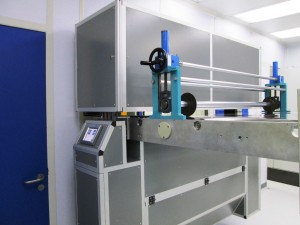
Cross saw integration
The system optimizes the cross cutting saw and automatically and efficiently removes the smallest possible disqualified sheet sections with minimum scrap, instead of disqualifying full size sheets. Integration with the stacker also allows multiple stacks with different quality levels.
User interface
A simple to operate yet sophisticated, field proven user interface answers the different needs of the line operator, line manager, quality assurance department and plant engineering. Watch the video below for more information.
Features
A few of the Optical Sheet Inspection system’s main features
- Illumination system
Multiple illumination systems are used for enhanced defect detection: Bright field – for dark defects detection, Dark field – for clear defects and Distortion field
- Line operator toolbox
A dedicated, simple line operator display showing the line, manufactured sheets status and indicators of the production quality with alarms, drill down tools and rolling maps of defects and distortion
- Sub-sheets
The system virtually dividessheets in to sub-sheets, calculating total quality level based on the quality level of each sub-sheet and controlling the stacker accordingly.
- Quality documentation
The entire run history is stored including all information that was available during the run: Defect/distortion maps, defect pictures, quality tests, trends etc.
Reports can be generated for each one of the qualified/scrappedsheets
Sheet Thickness Analyzer
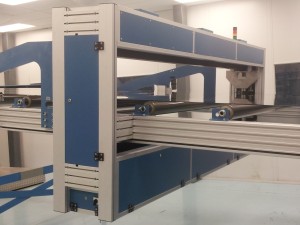
Description
The Sheet Thickness Analyzer is a fully automatic, scanning thickness inspection system for solid and foamed sheet manufacturers with any thickness. Based on optics, the system is capable of accurately measuring all sheet thicknesses without emitting Gamma, Beta or X-ray radiation.
Quicker Setups
The system automatically scans the thickness of the entire width of the sheet. After each scan, the software produces a graph and report of the sheet thickness that corresponds to each of the die screws and heat zones. The results show the operator which screws or heat zones to adjust to bring the sheet thickness in to the specified tolerances.
Cost Savings
The Sheet Thickness Analyzer allows for manufacturing at a lower tolerance than ever before, as close as possible to the minimum thickness requirements while enabling higher quality and even distribution of the material throughout the product. Further cost savings can be realized in less scrap, setup and changeover times between different thicknesses.
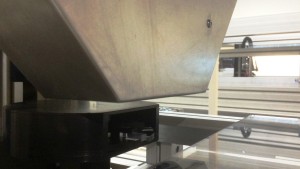
Zero-radiation measurement
The Sheet Thickness Analyzer is optical based, meaning there is no emission of harmful radiation like Gamma back-scattering, Beta or X-ray radiation. This also saves the plant from dealing with the procedural, regulatory and safety costs involved with radiating equipment
Features
- Automation
The Sheet Thickness Analyzer scans the entire sheet automatically at predetermined intervals with no operator involvement.
- Cost savings
Significant savings in labor, raw materials, lost production time, scrap and more.
- Documentation
Measurement results are displayed according to adjusting screw and heating zone for the die in use, directing operators which screws to adjust and/or whether to change the heating zone temperatures.
- Safety
The Sheet Thickness Analyzer does not emit any harmful radiation like Gamma back-scattering, Beta or X-ray radiation
Light Transmittance System

DESCRIPTION
The Light Transmittance System is a fully automatic, on-line system for measuring light transmittance (LT), Haze and Color values (Delta-E) on any plastic sheet. The system continuously measures at a fixed point on the sheet, close to the extruder and can be adjusted for dies of any width. The system uses a calibrated and controlled light source which passes through identical integrating spheres located outside the sheet (see photo below). This method ensures the accuracy of the system.
Shorter Changeover Times
As opposed to laboratory equipment, the Light Transmittance System is located on the line, near the extruder. This means that operators receive feedback on LT, Haze and Color changes almost immediately, drastically reducing changeover times.
Cost Savings
By providing immediate feedback on LT, Haze and Color values, the Light Transmittance System saves the plant raw material, scrap and lost production time.
Hot/Cold Sheet Compensation
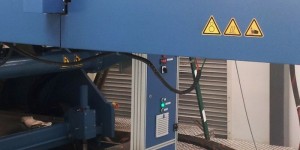
In order to compensate between the hot sheet measurements taken by the Light Transmittance System and the cold sheet measurements taken by the plant’s laboratory equipment, the system contains an automatic compensation algorithm which displays the results corrected for cold sheets.
Features
A few of the Light Transmittance System’s core features
- Automation
The Light Transmittance System continuously and automatically measures light transmittance, haze and color values with no operator involvement.
- Cost savings
Cost savings Significant savings in labor, raw materials, lost production time, scrap and more.
- Haze
The Light Transmittance System is capable of measuring even the most highly diffused sheets of any width.
- Compatibility
The Light Transmittance System is mounted on the cooling table and can be moved in and out, making it compatible with narrow and wide dies.
Polycarbonate Multiwall Analyzer
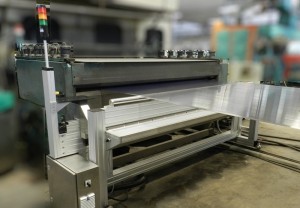
DESCRIPTION
The Polycarbonate Multiwall Analyzer is a fully automatic, in-line thickness inspection system designed specifically for multi-wall (hollow) sheet manufacturers. The system is the first of its kind and the only one capable of measuring wall thickness of all walls on the sheet automatically on the line.
Many multi-wall manufacturers still measure wall thickness manually using a micrometer on a sample taken at the end of the production line. Because of the relatively low production speed, the long production line length and the time needed to take the actual measurements, the micrometer measurement done at any given time represents the condition of the line 10 minutes to 1 hour ago, depending on the line speed. The measurement is also inaccurate as it involves applying the micrometer force manually on the soft plastic material.
Quicker Setups
The system automatically scans the thickness of each wall (top, bottom and internal walls if necessary) in under 25 seconds. After each scan, the software produces a report of the wall thickness that corresponds to each of the adjusting screws, according to the die in use. The results show the operator which screws they need to adjust and by exactly how much. Since the system is mounted close to the calibrator, the feedback on any change to the adjustment screws is almost immediate!
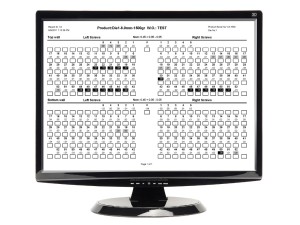
Cost Savings
The Polycarbonate Multiwall Analyzer allows for manufacturing at a lower tolerance than ever before, as close as possible to the minimum weight requirements while enabling higher quality and even distribution of the material throughout the product. This can save the plant tens of thousands of dollars per year, per line.
Several units have been working for over a year at a leading hollow PC sheet manufacturer and they have improved the plant’s quality, reduced setup times between die changeovers and saved money in scrap and reduced down time
Features
- Automatic scanning system
The Polycarbonate Multiwall Analyzer automatically scans the sheet at predetermined intervals with no operator involvement.
- Line operator toolbox
Significant savings in labor, raw materials, lost production time, scrap and more.
- Clear and useful documentation
Measurement reports are sorted by adjusting screw and heating zone, directing operators which screws to adjust and by how much or whether to change the heating zone temperatures
Polysee HD
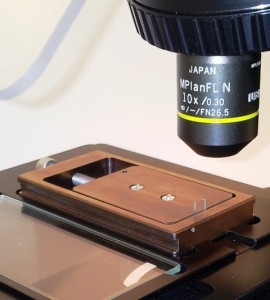
Description
The Polysee HD system is designed for plastic sheet manufacturers with the most demanding accuracy requirements. This new system contains all the advantages of the Polysee 9000 but introduces several new ones, most notably the super resolution optics that allow for high accuracy measurements of the UV protective layer on co-extruded sheets.
Optics
The Polysee HD uses a completely redesigned optical unit with several magnifications and illumination options. These options allow more accurate inspection of the sheet layers and zoom in on the entire sheet cross section or on any one of the co-extruded layers.
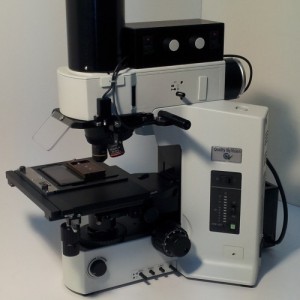
Software
The system uses our own Polysee software that allows it to be installed on Windows XP/7 based computer systems. In addition to the measurement data and reports, the operator can save sample images under different lighting conditions. At the end of the measurement, the Polysee software displays a graph of the layer distribution across the sheet, helping the operators set the line machinery and manufacture higher quality sheets while saving valuable UV material.
Features
- Illumination system
Special illumination system designed for co-extruded UV layer inspection
- Sample preperation
Includes special sample holders and all necessary tools for sample preparation
- Magnifications
Several magnification options for even the thinnest layers
- Custom software
Polysee software custom designed for the manufacturing process of multilayer plastics

